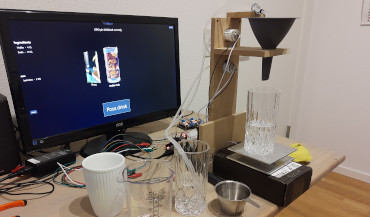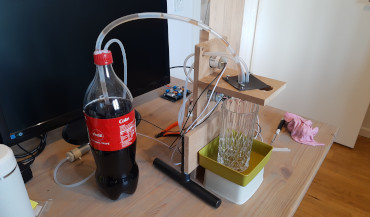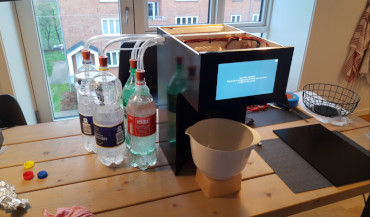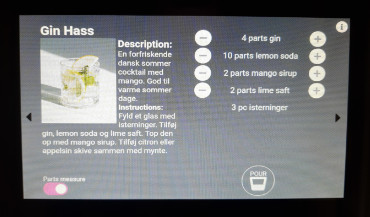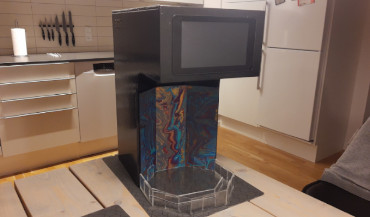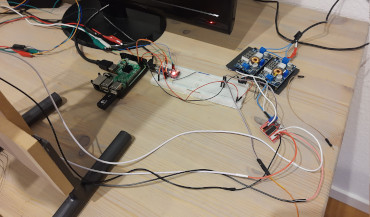
Raspberry Pi Automated Drinks Machine
29/12/2021
A day I was browsing youtube I fell across a video of a drinks machine. You selected a drink using a small text-only screen and some physical buttons to navigate. It worked by moving a glass on a slider. When it reached its destination it raised the glass and a release mechanism poured 2cl alcohol into the glass. It slid back and forth, raising the glass at every destination until it had combined all the needed alcoholic ingredients. When the alcohol had poured it slid to one end where it filled it with the desired soda or juice before serving it. I loved the concept but my biggest problem with the machine was the size and lacking navigation system. It was around 2.5 meters wide and the navigation system seemed lacking; because of the small screen size. I thought to myself “There has to be a better solution” and then I started prototyping.
My goal was to reduce the size to increase the mobility while also making it a better user experience. Many of the drinks machines I drew inspiration from were based on Arduinos. I wanted my machine to be have better UX than the Arduino counterparts and I wanted to show more relevant data to the users. Thus I used a Rasperry Pi instead. With that I could use a proper screen and it also gave me easier WiFi connectivity. I opted for not using a slider that pushes the glass against a release mechanism. Instead I used tubes and peristaltic pumps to pump liquids into the glass. That way I could drastically reduce the size.
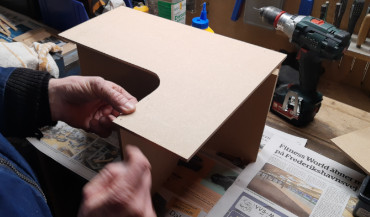
Chassis building process
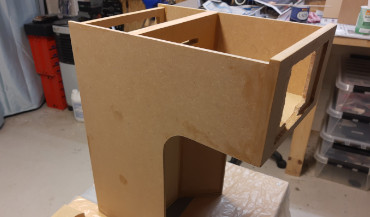
Chassis building process
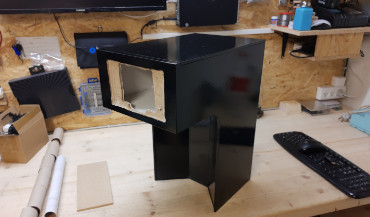
Chassis building process
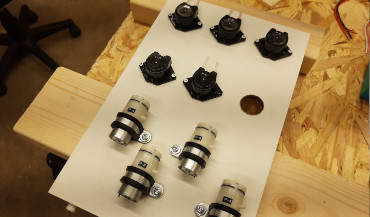
Fitting pumps
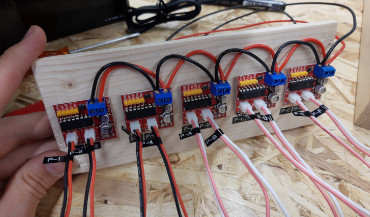
Adding pump controllers
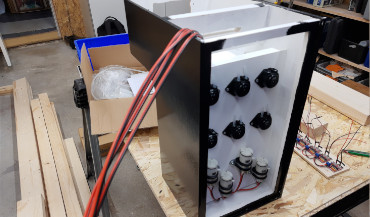
Installing pumps
For interfacing with the machine I used a 7" touch screen. The interface was build using Angular and Node.JS. Configuration of pumps happens on the machine. Here you specify what ingredients you have in your pumps. When the ingredients has been specified it will sort the drinks accordingly. It only shows drinks that it is able to make and omit all others. To make it easy to create new drinks I created a website called Boozit.dk. Right now the website and the drinks machine is not coupled directly together. Meaning that there is no mention of the drinks machine on the website. The website has an open API where you can search drinks by username and get the result in JSON format. That is what the machine uses to get drinks.
The project took around 1 year to complete with the help from family
and friends. The machine had its debut at a New Years party in 2020. I
have several things that I would like to refine including a new
website for creating drinks, better handling of soda/juice and more
configuration options.
More pictures from the project can be found here.
